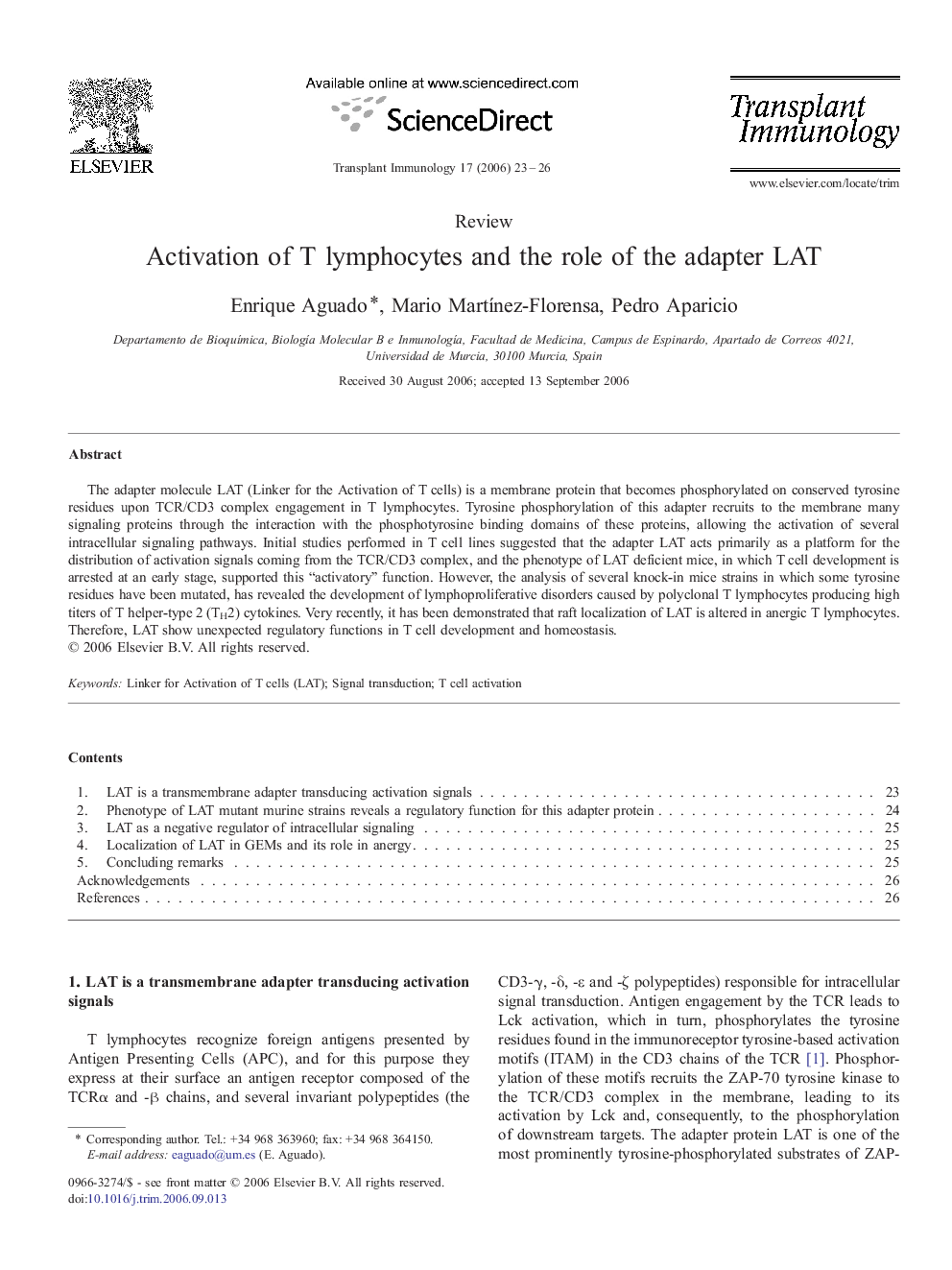| Article ID | Journal | Published Year | Pages | File Type |
|---|---|---|---|---|
| 3392650 | Transplant Immunology | 2006 | 4 Pages |
Abstract
The adapter molecule LAT (Linker for the Activation of T cells) is a membrane protein that becomes phosphorylated on conserved tyrosine residues upon TCR/CD3 complex engagement in T lymphocytes. Tyrosine phosphorylation of this adapter recruits to the membrane many signaling proteins through the interaction with the phosphotyrosine binding domains of these proteins, allowing the activation of several intracellular signaling pathways. Initial studies performed in T cell lines suggested that the adapter LAT acts primarily as a platform for the distribution of activation signals coming from the TCR/CD3 complex, and the phenotype of LAT deficient mice, in which T cell development is arrested at an early stage, supported this “activatory” function. However, the analysis of several knock-in mice strains in which some tyrosine residues have been mutated, has revealed the development of lymphoproliferative disorders caused by polyclonal T lymphocytes producing high titers of T helper-type 2 (TH2) cytokines. Very recently, it has been demonstrated that raft localization of LAT is altered in anergic T lymphocytes. Therefore, LAT show unexpected regulatory functions in T cell development and homeostasis.
Keywords
Related Topics
Life Sciences
Immunology and Microbiology
Immunology
Authors
Enrique Aguado, Mario MartÃnez-Florensa, Pedro Aparicio,
